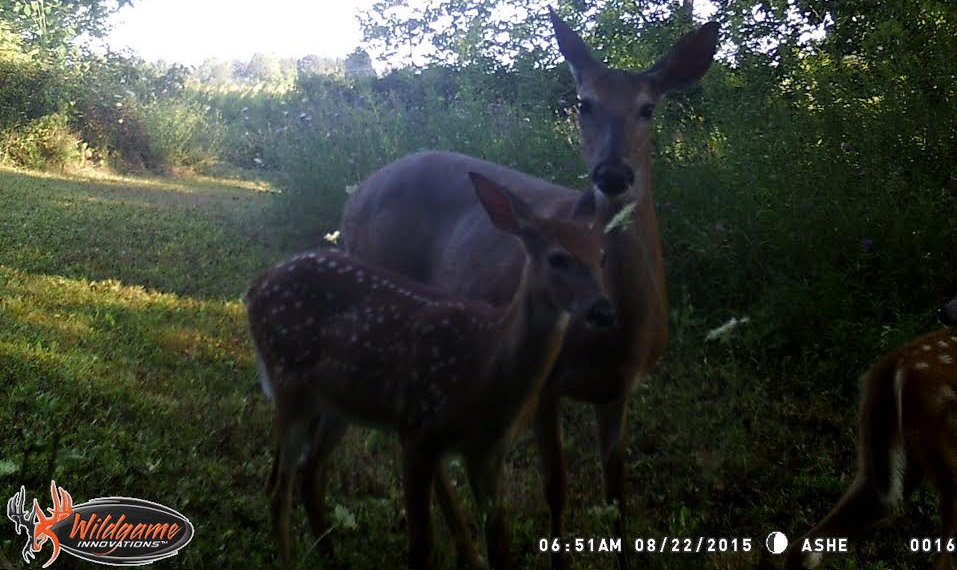If you are a game camera freak, more than likely you already have a slew of doe-with-fawn pics already. Before you erase them all, start keeping a running count tallying the number of does seen together. It will help you keep an eye on predation, and ultimately help you ascertain the number of fawns joining the adult herd this fall, or fawn recruitment.
The majority of fawns born this year are officially over the first major hurdle of their young lives; they have made through the first 2-3 weeks. Fawn mortality is highest during their first 2-3 weeks of life. Tiny newborns die at an alarming rate; they succumb to malnutrition, abandonment, disease and, most of all, predators. In high-predator areas, as few as 10 percent make it to fall. On average, about 70 percent make it.
Once they make it past the first few weeks, they can begin to evade those nasty predators and start following mom around; hanging with mom is a good way to stay alive. Most of the fawns showing up on game cameras these days have a fairly good chance of making it to fall. You may not see them yet in the fields, but they often show up on camera.

Make no mistake, the best time to count fawns for your recruitment indexing is in the late summer to early fall. It’s official then; the fawns are weaned and every bit a part of the adult herd, and it is not uncommon to find fawns mixing with does in feeding fields. Calculating a fawn recruitment index will allow you to determine how many does you should take during the upcoming season. The higher the fawn to doe ratio, the more does you can or should be taking to keep the herd in check. The lower the number, the fewer does should come out of the herd.
But don’t be afraid to start counting fawns and does now. Are your does dropping twins? Are fawns becoming scarcer and scarcer? Do your fawns appear to be in good shape? What percentage of your does appear to have fawns? It all matters if you are trying to manage the property you hunt.
Unfortunately, most camera users are all about bucks, the bigger the better. They are too busy focusing on bucks to get around to paying attention to the does and fawns. They have no idea what their property’s recruitment rate is, or how many does should be taken. Doing a weekly camera tally from now until August will give you a good feel for how your deer herd is doing, and get you in the habit of paying attention to the most important part of the herd: the does and their fawns.
